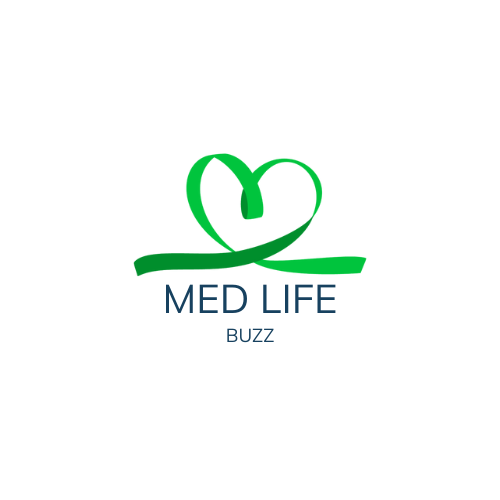🩺 Breast Cancer Treatment Options After Lumpectomy: A Complete Guide for Recovery and Prevention
 Understanding Lumpectomy and What Comes Next
Understanding Lumpectomy and What Comes Next
A lumpectomy, often called breast-conserving surgery, is one of the most common procedures used to remove cancer from the breast while preserving as much natural tissue as possible. It’s a major step toward healing, but for many women, surgery is only part of the journey.
After a lumpectomy, doctors usually recommend additional treatments to destroy any remaining cancer cells and reduce the risk of recurrence. These next steps depend on your cancer stage, hormone receptor status, and overall health.
This article explores the most effective breast cancer treatment options after lumpectomy, along with recovery tips to support your long-term health.
🔬 Why Additional Treatment Is Needed After Lumpectomy
Even though a lumpectomy removes the visible tumor, microscopic cancer cells can sometimes remain in the surrounding tissue. These cells are too small to be detected during surgery.
To prevent these cells from growing or spreading, adjuvant therapies—treatments given after surgery—are commonly used. The main goal is to reduce the risk of recurrence and improve long-term survival.
💡 1. Radiation Therapy: The Standard Post-Lumpectomy Treatment
One of the most common treatments after lumpectomy is radiation therapy. It uses high-energy rays to destroy cancer cells that might remain in the breast area.
Types of Radiation Used After Lumpectomy:
-
External Beam Radiation: The most common method, targeting the entire breast.
-
Partial Breast Irradiation: Focuses only on the area where the tumor was removed.
-
Intraoperative Radiation Therapy (IORT): Delivers a single dose of radiation during surgery.
Duration and Side Effects:
Radiation therapy usually lasts 3–6 weeks. Some side effects may include mild fatigue, redness, or breast tenderness—but these are temporary and manageable with care.
💊 2. Hormone Therapy (Endocrine Therapy)
If your breast cancer is hormone receptor-positive (HR+), your oncologist may recommend hormone therapy to block or lower estrogen levels, which fuel cancer growth.
Common Hormone Therapy Options:
-
Tamoxifen: Suitable for both premenopausal and postmenopausal women.
-
Aromatase Inhibitors (AIs): Such as letrozole, anastrozole, or exemestane, commonly used for postmenopausal women.
Duration:
Treatment usually lasts 5 to 10 years, depending on the patient’s condition.
This therapy greatly reduces the risk of recurrence and new cancer formation in the other breast.
💉 3. Chemotherapy After Lumpectomy
Not every patient needs chemotherapy, but it’s often recommended for:
-
Larger or aggressive tumors
-
Cancer that has spread to lymph nodes
-
Triple-negative or HER2-positive breast cancer
Purpose:
Chemotherapy kills fast-growing cancer cells throughout the body, ensuring that no hidden cancer remains after surgery.
Common Side Effects:
Fatigue, hair loss, nausea, and weakened immunity are temporary effects, and most patients recover well after completing their sessions.
🧬 4. Targeted Therapy for HER2-Positive Breast Cancer
If your cancer cells produce high levels of HER2 protein, targeted therapy may be part of your post-lumpectomy plan.
Common Targeted Drugs Include:
-
Trastuzumab (Herceptin)
-
Pertuzumab (Perjeta)
-
T-DM1 (Kadcyla)
These medications specifically attack HER2-positive cells while sparing healthy cells, making treatment more effective and less toxic than traditional chemotherapy.
🧠 5. Immunotherapy: The New Frontier
For some advanced or triple-negative breast cancer cases, immunotherapy can help the body’s immune system recognize and destroy cancer cells.
Drugs like pembrolizumab (Keytruda) are showing promising results, offering new hope to women who previously had limited treatment options.
🌿 6. Lifestyle and Natural Recovery After Lumpectomy
While medical treatments are vital, recovery also depends on lifestyle choices and emotional health. After a lumpectomy, your body needs proper care, nutrition, and rest to heal completely.
Helpful Lifestyle Changes:
-
Balanced Diet: Focus on whole foods rich in antioxidants—fruits, vegetables, and lean proteins.
-
Regular Exercise: Light physical activity like walking or yoga can improve energy levels and mood.
-
Emotional Support: Join breast cancer support groups or speak with a counselor to manage stress.
-
Avoid Smoking & Alcohol: These habits can increase recurrence risks.
💗 7. Follow-Up Care and Monitoring
After a lumpectomy, regular follow-up appointments are essential to detect any signs of recurrence early.
Typical Follow-Up Schedule:
-
Physical exams every 3–6 months for the first 3 years.
-
Annual mammograms.
-
Ongoing blood tests or imaging if needed.
Following your oncologist’s advice closely ensures early detection and peace of mind.
🩸 8. Emotional Healing and Body Confidence
A lumpectomy can change how a woman feels about her body. It’s natural to experience anxiety, sadness, or even fear about recurrence.
Tips for Emotional Recovery:
-
Practice mindfulness or meditation.
-
Speak openly with loved ones about your feelings.
-
Explore post-surgery lingerie or prosthesis options to regain confidence.
Healing is not just physical—it’s emotional and mental too.
🌸 Conclusion: Hope Beyond Surgery
A lumpectomy marks the beginning of healing, not the end of your journey. From radiation and hormone therapy to supportive lifestyle changes, there are many effective breast cancer treatment options after lumpectomy that can help you live a long, healthy, and fulfilling life.
Medical science continues to evolve, offering better outcomes and more personalized treatments every year. With the right combination of therapies and a positive mindset, recovery is not just possible—it’s powerful.
